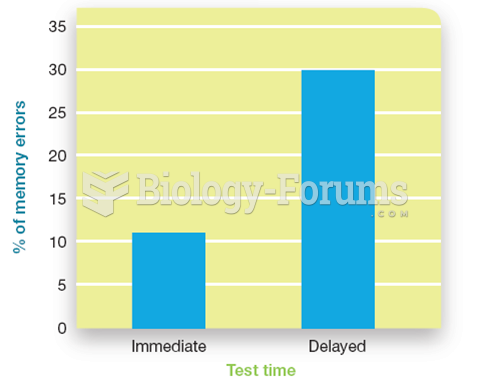Answer to Question 1
Prosopagnosiathe inability to recognize facesimplies damage to the configurational system. Somebody with prosopagnosia can see the face of another person and even recognize whether that person is sad, happy, or angry. But what he fails to recognize is whether that person being observed is a stranger, his friend, or his own mother. The ability to recognize faces is especially influenced by lesions of the right fusiform gyrus, either unilateral or bilateral. Facial memories are affected, in particular, when the bilateral lesions include the right anterior temporal lobe. Because they have so much difficulty recognizing faces, people with prosopagnosia may have trouble in other areas of life as well. They may not be able to follow movies because they cannot keep track of the different actors and fail to recognize them when they appear in different scenes of the movie, for example.
Answer to Question 2
According to Gibson's theory of direct perception, the information in our sensory receptors, including the sensory context, is all we need to perceive anything. As the environment supplies us with all the information we need for perception, this view is sometimes also called ecological perception. In other words, we do not need higher cognitive processes or anything else to mediate between our sensory experiences and our perceptions. Existing beliefs or higher-level inferential thought processes are not necessary for perception.
Template theories suggest that our minds store myriad sets of templates. Templates are highly detailed models for patterns we might recognize. We recognize a pattern by comparing it with our set of templates. We then choose the exact template that perfectly matches what we observe.
Yet another alternative explanation of pattern and form perception may be found in feature-matching theories. According to these theories, we attempt to match features of a pattern to features stored in memory, rather than to match a whole pattern to a template or a prototype. One such feature-matching model has been called Pandemonium (pandemonium refers to a noisy, chaotic place and hell). In this model, metaphorical demons with specific duties receive and analyze the features of a stimulus. In the Pandemonium model, conceived by Oliver Selfridge, there are four kinds of demons: image demons, feature demons, cognitive demons, and decision demons. The image demons receive a retinal image and pass it on to feature demons.. Each feature demon calls out when matches are made between the stimulus and the given feature. These matches are yelled out at demons at the next level of the hierarchy, the cognitive (thinking) demons.. The cognitive demons in turn shout out possible patterns stored in memory that conform to one or more of the features noticed by the feature demons. A decision demon listens to the pandemonium of the cognitive demons. It decides on what has been seen, based on which cognitive demon is shouting the most frequently (i.e., which has the most matching features).
Seeing with the Help of Geons: Irving Biederman suggested that we recognize 3-D objects by manipulating simple geometric shapes called geons (for geometrical ions). These shapes include objects such as bricks, cylinders, wedges, cones, and their curved axis counterparts. According to Biederman's recognition-by-components (RBC) theory, we quickly recognize objects by observing the edges of them and then decomposing the objects into geons. The geons also can be recomposed into alternative arrangements. You know that a small set of letters can be manipulated to compose countless words and sentences. Similarly, a small number of geons can be used to build up many basic shapes and then myriad basic objects.







